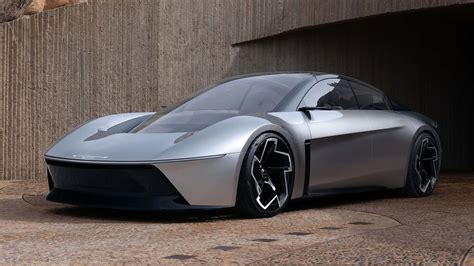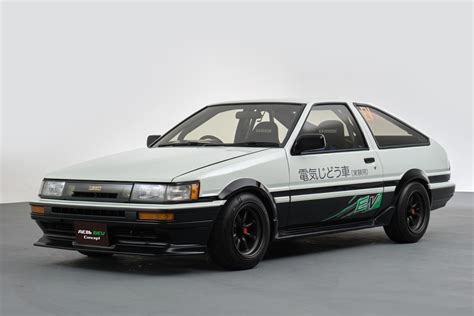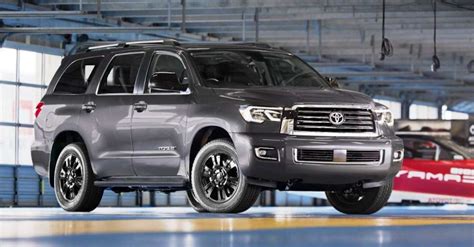
Chrysler, now streamlined to a single minivan model, the Pacifica, is embarking on a radical transformation toward an all-electric future by 2028, leveraging parent company Stellantis’s significant investments in electrification and software. The brand aims to redefine its identity, moving beyond its minivan-centric image to compete in the rapidly evolving electric vehicle market with innovative designs and advanced technology.
Chrysler’s dramatic shift comes as the automotive industry undergoes a massive transition to electric power. The decision to consolidate around the Pacifica, while ceasing production of the 300 sedan, signals a strategic pivot toward embracing electrification and connected car technologies. This move is underpinned by Stellantis’s ambitious $35 billion investment in software and electrification through 2025. Chrysler plans to launch its first battery-electric vehicle (BEV) by 2025, serving as a crucial stepping stone toward its goal of becoming an all-electric brand within the next five years.
According to Stellantis CEO Carlos Tavares, the company remains dedicated to the Chrysler brand. The strategy involves focusing on a specific niche and excelling within that segment. Tavares emphasized that, rather than attempting to compete across numerous segments with a broad lineup, Chrysler’s focus will be on providing innovative and compelling electric vehicles that appeal to a specific customer base.
The current Chrysler lineup consists exclusively of the Pacifica minivan, available in both gasoline and plug-in hybrid (PHEV) versions. This contrasts sharply with Chrysler’s historical presence as a full-line automaker that once offered a diverse range of vehicles, including sedans, coupes, and convertibles. The discontinuation of the 300 sedan marks the end of an era for Chrysler, but it also clears the path for the brand’s electric future.
The decision to focus on the Pacifica seems logical given the minivan’s enduring popularity and the growing demand for family-friendly vehicles with hybrid or electric powertrains. The Pacifica Plug-in Hybrid offers a compelling combination of fuel efficiency, spaciousness, and versatility, making it an attractive option for environmentally conscious families.
Looking ahead, Chrysler’s all-electric future hinges on the successful development and launch of new BEVs. The brand has previewed its electric vision with the Chrysler Airflow concept, a sleek and modern crossover that showcases the brand’s design direction and technological aspirations. The Airflow concept features a spacious interior, advanced connectivity features, and a long-range battery pack, hinting at the types of vehicles Chrysler plans to offer in the electric era.
Chrysler’s transition to an all-electric brand is not without its challenges. The company will need to overcome several hurdles, including developing competitive electric vehicle technology, building a robust charging infrastructure, and convincing consumers to embrace electric vehicles. Furthermore, it must redefine its brand image to appeal to a new generation of car buyers who prioritize sustainability and technology.
The automotive industry is undergoing rapid transformation, and manufacturers are adapting their strategies to meet new technological challenges and customer preferences. Chrysler’s reinvention mirrors similar efforts by other established brands to reposition themselves for an electric future. The company’s success will depend on its ability to execute its electrification strategy effectively and deliver innovative and compelling electric vehicles that resonate with consumers.
The legacy of Chrysler, with its long and storied history, now faces a pivotal moment. While the departure from traditional gasoline-powered vehicles may disappoint some loyal customers, it also represents an opportunity for Chrysler to reinvent itself and establish a new identity as a leader in the electric vehicle market. The coming years will be critical as Chrysler navigates this transition and strives to deliver on its promise of an all-electric future.
The transition to electric vehicles is driven by a combination of factors, including stricter emissions regulations, growing consumer demand for sustainable transportation, and advancements in battery technology. Governments worldwide are implementing policies to encourage the adoption of electric vehicles, such as tax incentives, subsidies, and stricter fuel economy standards. Consumers are increasingly aware of the environmental benefits of electric vehicles and are drawn to their lower operating costs and advanced technology.
Moreover, the advancements in battery technology have significantly improved the range and performance of electric vehicles, making them more practical for everyday use. Automakers are investing heavily in battery research and development to further improve the energy density, charging speed, and lifespan of batteries. These advancements are crucial for accelerating the adoption of electric vehicles and making them a viable alternative to gasoline-powered cars.
Chrysler’s commitment to electrification aligns with the broader industry trend and positions the brand for long-term success in the evolving automotive market. By focusing on electric vehicles, Chrysler can reduce its carbon footprint, attract environmentally conscious customers, and capitalize on the growing demand for sustainable transportation.
The brand’s future product lineup will likely include a range of electric vehicles, from compact cars to SUVs and minivans. These vehicles will feature advanced battery technology, fast charging capabilities, and over-the-air software updates, ensuring they remain competitive in the rapidly evolving electric vehicle market. Chrysler will also need to invest in charging infrastructure to support its electric vehicle customers. This includes partnering with charging network providers to expand the availability of public charging stations and offering home charging solutions for its customers.
Furthermore, Chrysler will need to train its workforce to support the production and maintenance of electric vehicles. This includes providing training on battery technology, electric motors, and other specialized components. The transition to electric vehicles will require significant investments in training and infrastructure, but it will also create new job opportunities in the automotive industry.
The decision to discontinue the Chrysler 300, a large sedan that once symbolized American luxury, reflects the changing preferences of car buyers. Sedans have been losing market share to SUVs and crossovers for several years, and Chrysler’s decision to focus on minivans and electric vehicles reflects this shift in consumer demand. The 300’s departure marks the end of an era for Chrysler, but it also allows the brand to focus its resources on more promising segments of the market.
The Pacifica minivan, with its spacious interior, comfortable ride, and available hybrid powertrain, remains a key part of Chrysler’s strategy. The Pacifica Plug-in Hybrid offers a compelling combination of fuel efficiency and practicality, making it an attractive option for families who want to reduce their carbon footprint. Chrysler will likely continue to offer the Pacifica in both gasoline and plug-in hybrid versions for the foreseeable future, while also developing a fully electric minivan.
Chrysler’s all-electric future represents a significant departure from its past, but it also offers the brand a chance to reinvent itself and become a leader in the electric vehicle market. By focusing on innovation, sustainability, and customer satisfaction, Chrysler can build a successful electric vehicle business and secure its long-term future. The company’s ability to navigate the challenges and opportunities of the electric vehicle revolution will determine its success in the years to come.
The automotive industry is in a state of flux, with new technologies and business models emerging at an unprecedented pace. Automakers are facing intense competition from established players and new entrants, such as Tesla and Rivian. To succeed in this dynamic environment, automakers must be agile, innovative, and customer-focused.
Chrysler’s all-electric strategy is a bold move that reflects the company’s commitment to innovation and sustainability. By embracing electric vehicles, Chrysler can reduce its environmental impact, attract new customers, and position itself for long-term success in the evolving automotive market. The company’s ability to execute its electrification strategy effectively will be crucial for its future.
The partnership with Stellantis provides Chrysler with access to a wide range of resources and expertise, including advanced battery technology, electric vehicle platforms, and global manufacturing capabilities. This partnership will be essential for Chrysler as it develops and launches its new electric vehicles.
The road ahead will not be easy, but Chrysler has a clear vision and a strong commitment to electrification. With the support of Stellantis and the dedication of its employees, Chrysler can successfully navigate the challenges and opportunities of the electric vehicle revolution and emerge as a leader in the electric vehicle market.
The success of Chrysler’s electric vehicle strategy depends on several factors, including the availability of charging infrastructure, the cost of batteries, and consumer acceptance of electric vehicles. Governments and industry stakeholders are working to address these challenges, and progress is being made on all fronts.
Charging infrastructure is expanding rapidly, with new public charging stations being installed every day. The cost of batteries is declining, making electric vehicles more affordable. And consumer acceptance of electric vehicles is growing, as more and more people experience the benefits of driving electric.
Chrysler is committed to working with governments, industry partners, and consumers to accelerate the adoption of electric vehicles. The company believes that electric vehicles are the future of transportation, and it is committed to making that future a reality.
As Chrysler embarks on its all-electric journey, it faces a unique set of challenges and opportunities. The brand must overcome its past struggles and build a new identity as a leader in the electric vehicle market. It must also compete with established players and new entrants who are vying for a share of the growing electric vehicle market.
To succeed, Chrysler must focus on innovation, sustainability, and customer satisfaction. It must develop electric vehicles that are stylish, efficient, and affordable. It must also provide a seamless and enjoyable ownership experience for its electric vehicle customers.
Chrysler has a rich history and a strong brand reputation. With the right strategy and the right execution, it can successfully transition to an all-electric future and become a leader in the electric vehicle market. The journey will be challenging, but the rewards will be significant.
The automotive industry is at a crossroads, and the decisions that automakers make today will determine their success in the years to come. Chrysler’s decision to go all-electric is a bold move that reflects the company’s commitment to innovation and sustainability. It is a move that could transform Chrysler into a leader in the electric vehicle market and secure its long-term future.
The brand’s future hinges on factors such as the technology utilized in future models, the adoption rate of the charging infrastructure necessary to support widespread EV use, and the changing consumer sentiments regarding electric vehicles. Chrysler aims to be at the forefront of this technological evolution, providing consumers with desirable, efficient, and technologically advanced electric vehicles.
Chrysler’s ambitious goal of becoming an all-electric brand by 2028 is achievable, albeit challenging. The investments made by Stellantis in electrification and software development provide a strong foundation for Chrysler to build upon. However, the company must also execute its strategy effectively and adapt to the rapidly changing automotive landscape.
The future of Chrysler is bright, but it will require hard work, dedication, and a relentless focus on innovation and customer satisfaction. The company’s commitment to electrification is a positive sign, and it positions Chrysler for long-term success in the evolving automotive market.
Chrysler’s resurgence will not only redefine the brand but also potentially influence the broader automotive market. As more automakers commit to electrification, the industry is likely to see further innovation and competition, ultimately benefiting consumers. Chrysler’s successful transformation could serve as a model for other established brands looking to reinvent themselves in the electric era.
The company’s shift reflects a larger industry trend toward sustainable transportation. Automakers worldwide are investing billions of dollars in electric vehicle technology and infrastructure. This transition is driven by a combination of factors, including stricter emissions regulations, growing consumer demand for environmentally friendly vehicles, and advancements in battery technology.
Chrysler’s commitment to an all-electric future aligns with this trend and positions the brand for long-term success in the evolving automotive market. By focusing on electric vehicles, Chrysler can reduce its carbon footprint, attract environmentally conscious customers, and capitalize on the growing demand for sustainable transportation.
In conclusion, Chrysler’s journey from one minivan model to an all-electric future is a testament to the transformative power of innovation and strategic vision. While challenges remain, the brand’s commitment to electrification, supported by Stellantis’s resources and expertise, positions it for a potential resurgence in the competitive automotive market. The coming years will be crucial as Chrysler navigates this transition and strives to deliver on its promise of sustainable and technologically advanced vehicles. The success of this ambitious endeavor will not only redefine Chrysler but also contribute to shaping the future of the automotive industry. The electric revolution is underway, and Chrysler is determined to be a part of it, driving towards a cleaner and more sustainable future.
Frequently Asked Questions (FAQ)
1. Why is Chrysler focusing on becoming an all-electric brand by 2028?
Chrysler is transitioning to an all-electric brand to align with the automotive industry’s shift toward sustainable transportation, driven by stricter emissions regulations, growing consumer demand for environmentally friendly vehicles, and advancements in battery technology. Stellantis, Chrysler’s parent company, is investing heavily in electrification, and this move positions Chrysler to capitalize on the growing electric vehicle market. As stated by Stellantis CEO Carlos Tavares, the company is committed to the Chrysler brand and its focused strategy within a specific niche.
2. What does the discontinuation of the Chrysler 300 mean for the brand’s future?
The discontinuation of the Chrysler 300 marks the end of an era for the brand, as it was one of the last traditional sedans in Chrysler’s lineup. However, it also signifies a strategic decision to focus resources and development efforts on electric vehicles. This move allows Chrysler to streamline its operations and concentrate on building a future centered around sustainable and technologically advanced transportation options.
3. How is Chrysler planning to compete in the electric vehicle market?
Chrysler plans to compete by leveraging Stellantis’s investments in electrification and software to develop innovative and compelling electric vehicles. The brand has already showcased its vision with the Chrysler Airflow concept, a sleek crossover featuring advanced connectivity and long-range battery technology. By focusing on design, technology, and sustainability, Chrysler aims to attract a new generation of car buyers who prioritize electric mobility.
4. What role does the Chrysler Pacifica play in the brand’s transition to electric vehicles?
The Chrysler Pacifica, particularly the plug-in hybrid version, serves as a bridge to the brand’s all-electric future. It offers a combination of practicality, fuel efficiency, and family-friendly features, making it an attractive option for consumers who are considering hybrid or electric vehicles. The Pacifica helps maintain Chrysler’s presence in the market while the company develops and launches its full-electric models.
5. What are the potential challenges for Chrysler in achieving its all-electric goal?
Chrysler faces several challenges, including developing competitive electric vehicle technology, building a robust charging infrastructure, and convincing consumers to embrace electric vehicles. Additionally, the brand must redefine its image to appeal to a new generation of car buyers who prioritize sustainability and technology. Overcoming these hurdles will require significant investments in research and development, infrastructure, and marketing. The rapid pace of technological change in the EV sector also poses a continuous challenge, requiring constant adaptation and innovation.









